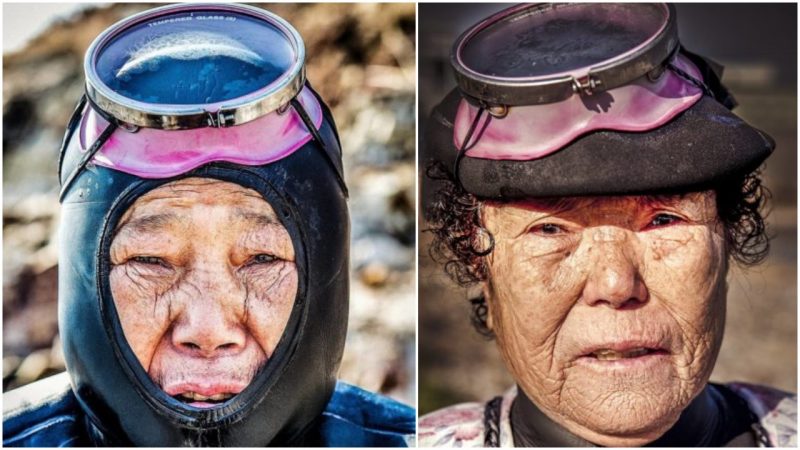Jeju Island in South Korea is known for its volcanic landscape of craters, cavelike lava tubes, and the beach resorts, and it is without doubt one of the country’s most beautiful destinations. The island also has the Haenyeo: real-life mermaids.
The haenyeo, or “sea women” are elderly women, some in their 80s, living on the island who regularly dive up to 34 feet under the sea to gather shellfish such as abalone, conch, sea urchins, and octopus with the help of oxygen masks.
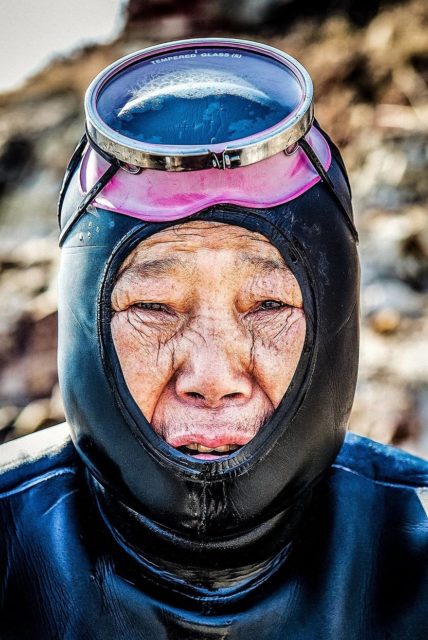
Although it might sound just as easy as an enjoyable scuba dive, the tradition existed before the diving equipment was available, and the haenyeo never used any breathing equipment.
This fascinating tradition on Jeju Island can be traced back to 434 AD. Originally, it was considered a male profession but by the 18th century most, if not all, divers were women. There are a few explanations of how this tradition turned from a male to a female activity.
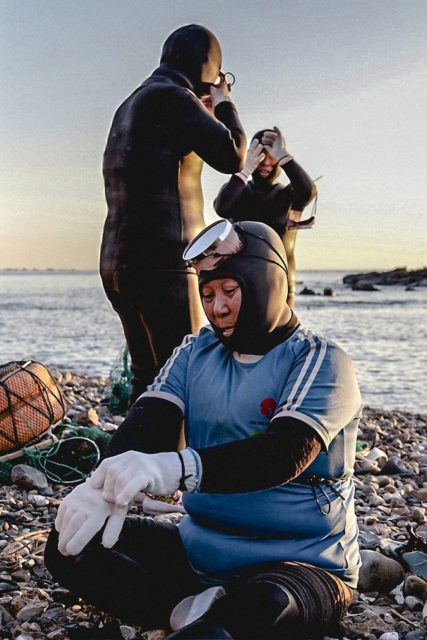
One suggestion in the historical records is that during the 17th century many men died at sea due to war and fishing accidents, so women had to take over the diving.
Another explanation is that although men were conscripted into the king’s army, women were still required to pay steep taxes. Left with no choice, Jeju women turned to diving in order to support their children and pay the taxes. Even pregnant women would dive in the freezing waters.
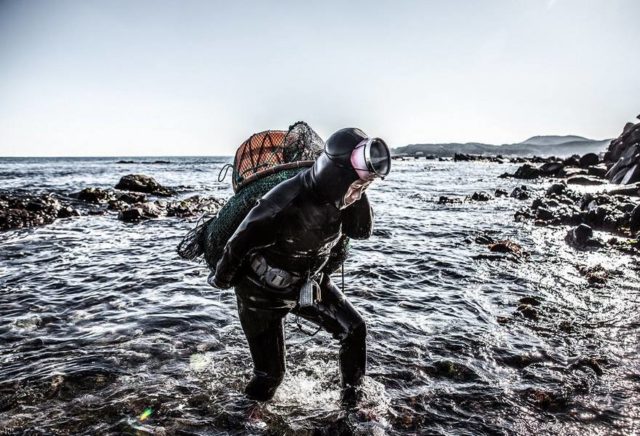
Finally, there it is because they are more able to tolerate the cold water than men due to the higher percentage of body fat.
In the past, the Jeju haenyeo used to hold their breath for two minutes for every dive, up to seven hours a day, 90 days in the year, making a unique verbal sound when resurfacing.
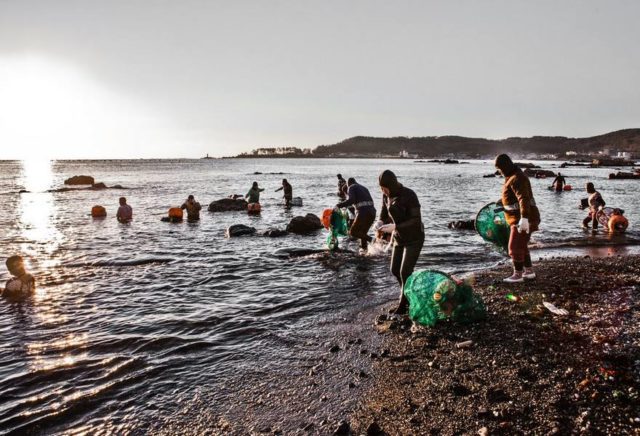
For years, the haenyeo dived in the freezing ocean waters protected only by homemade cotton suits. When wetsuits became available in the 1970s, their work was made easier and they could also dive deeper, spend more time underwater, thus increasing their incomes.
The sea women have a great knowledge of the sea and marine life. To sink faster, they wear lead weights strapped to their waists.
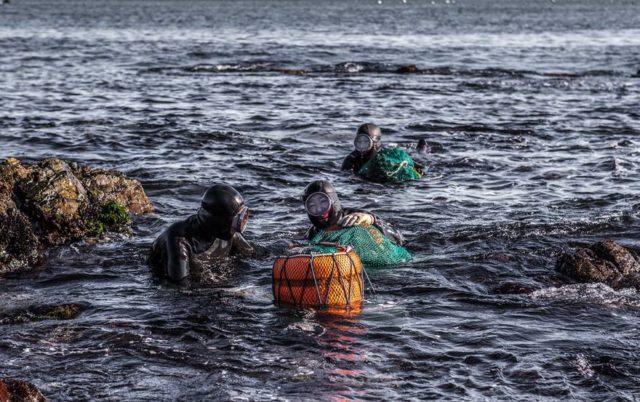
A flotation device called a “tewak” is left on the surface of the water with a net hanging beneath the tewak where they store the harvest. Many of them use various tools to dig conch and abalone from crevices on the sea floor.
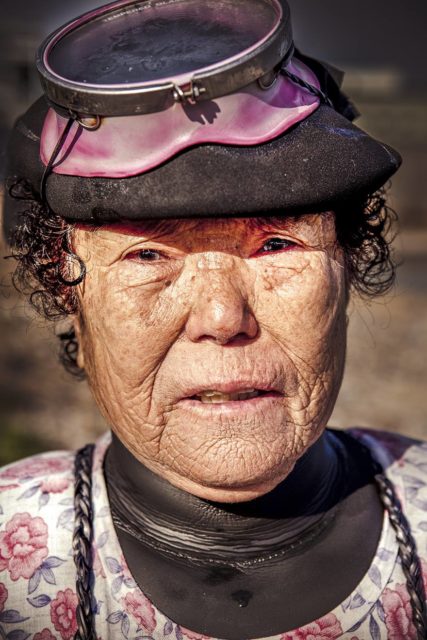
Before a dive the sea women say prayers to Jamsugut, the goddess of the sea, asking her for safety and an abundant catch.
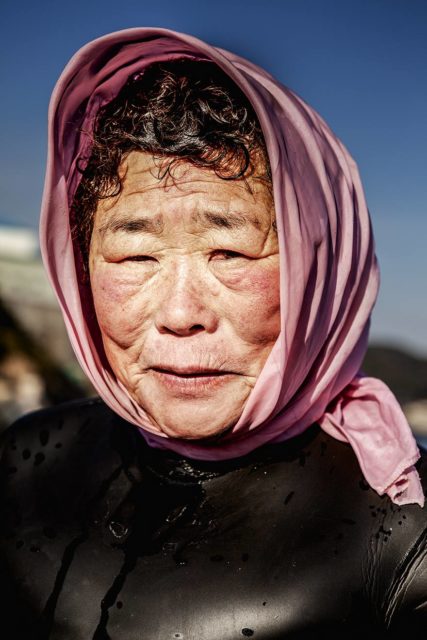
The Jeju divers are categorized into three groups according to their level of experience: Hagun are the beginners, Junggun are the intermediate, and Sanggun are the experts who offer guidance to the others.
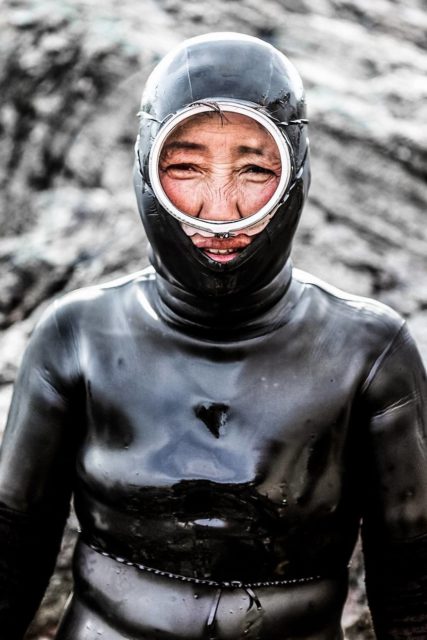
Mijoo Kim, a New York-based photographer from South Korea, took a wonderful series of photos of the haenyo and named it “The Mother of the Sea,” portraying them and their work. She says that this profession is certainly not for the weak, hence the Korean saying: “Haenyos do the work of the dead in the land of the living.”
As reported by the New York Times, about 21 percent of the Jeju’s women were professional divers in the early 1960s.
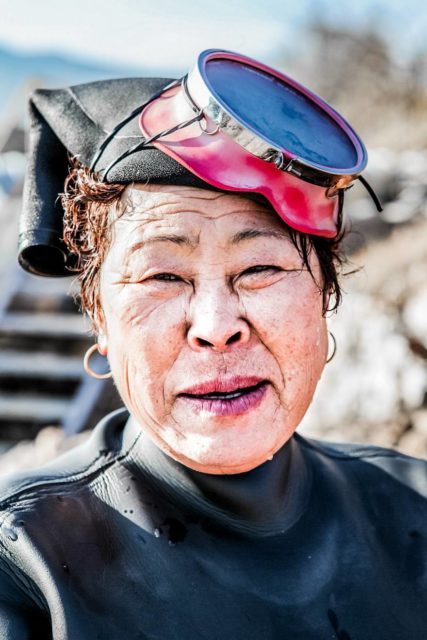
For years, the tradition was handed down in local fishery cooperatives, schools, and in families from mother to daughter, but since the work is both hard and dangerous, young women prefer to work in hotel resorts instead of diving in the sea.
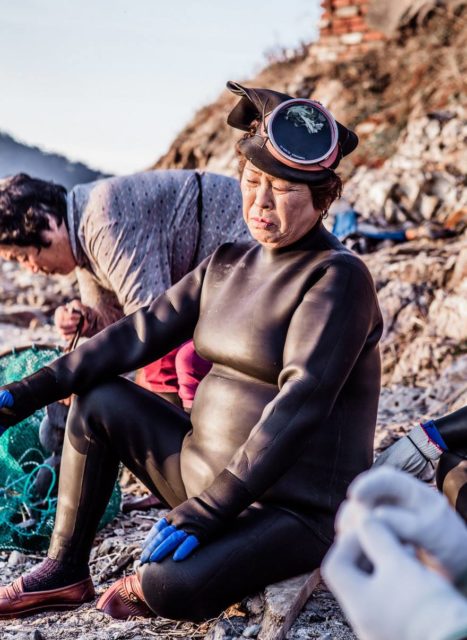
The number of sea women has dwindled to about 4,500, from 26,000 in the 1960s, with 84 percent of them aged 60 or older.
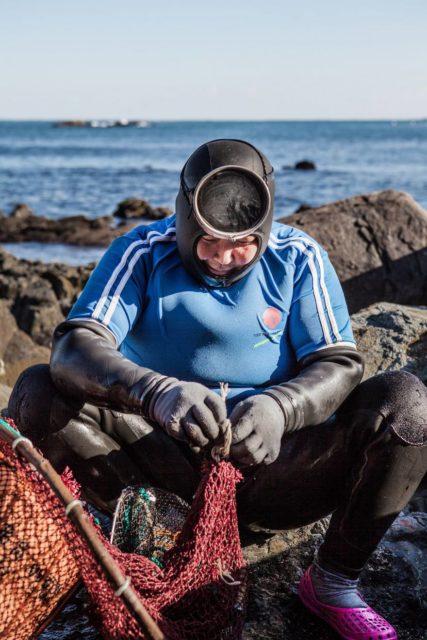
The Jeju government continues its struggle to save this tradition and a few years ago they requested that UNESCO add the haenyeo to its Intangible Cultural Heritage list, but if this trend continues there will be no haenyeo at all in near future.
Read another story from us: The Mermaid Myth and why Columbus was Convinced he had Encountered Them
“Most of the haenyeo will be gone in 20 years unless we have new recruits,” said Yang Hi-bum, a Jeju government official.
